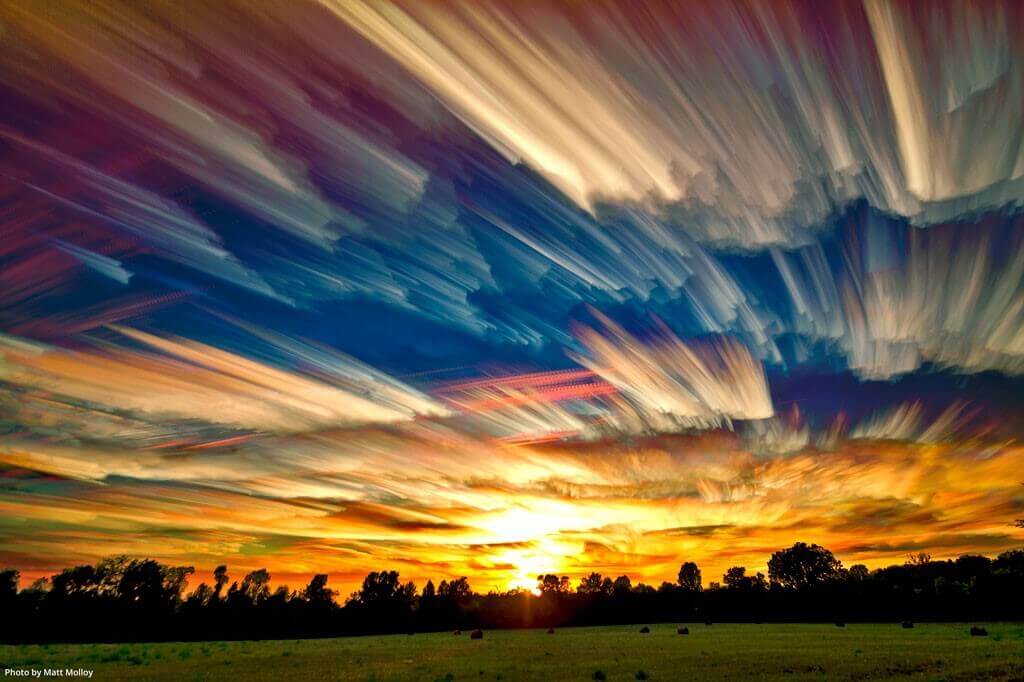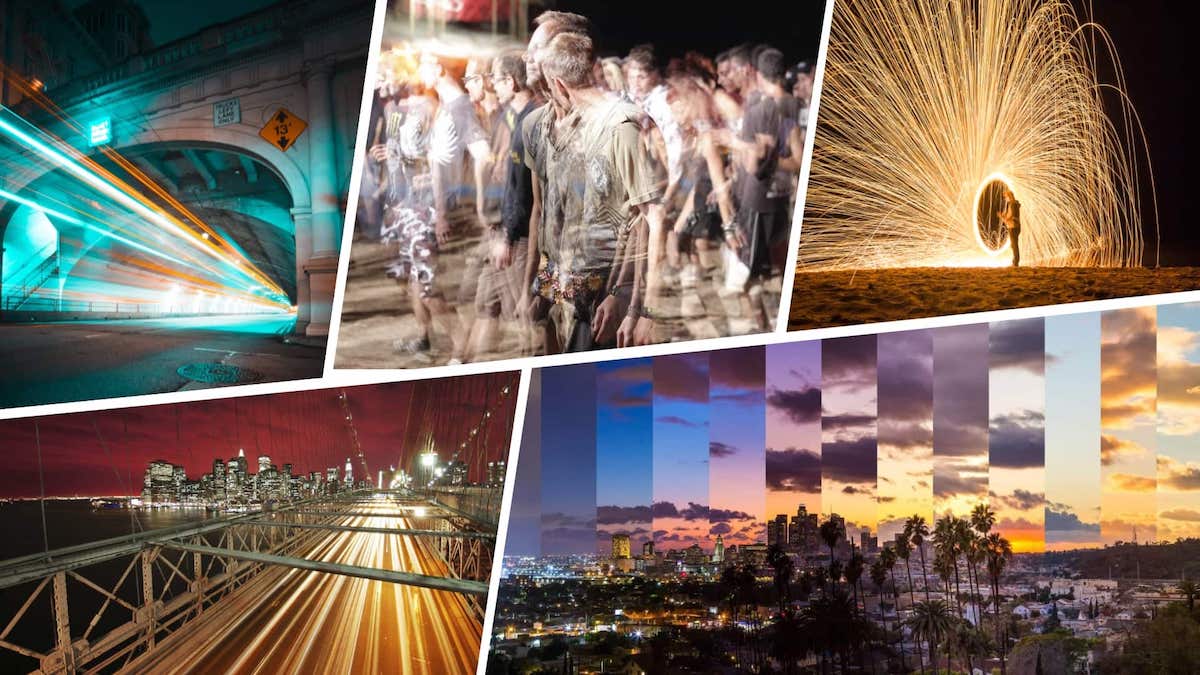Even if you do not know exactly what a time lapse video is, there’s a good chance you have seen at least one before in a film, television show, or documentary. Despite their highly specific nature, time lapses find frequent use across all forms of video entertainment. Read on to learn the precise meaning of time lapse, how they work, how to make one, what time lapse photography is used for, and we’ll see some amazing photo and video examples.
How time lapse video works
What does time lapse mean?
The meaning of time lapse is a specialized type of shot that can be achieved in-camera, through editing, or a combination of both. If you are wondering how to make a time lapse video, there are a few different ways to pull off the effect, as well as a few different reasons why you might want to. Before we get into the ‘how’ and ‘why,’ let’s first be crystal clear on the ‘what.’
If there are any other film terms throughout this article that aren’t familiar to you, you can look them up in our Ultimate Glossary of Filmmaking Terms. Now let's get to our time lapse definition.
TIME LAPSE DEFINITION
What is time lapse video?
Time lapse is a technique where frames are shot much slower than a normal rate (e.g., 24 frames per minute instead of per second). This allows the action to progress much faster than in reality. This is typical for nature documentaries to capture clouds moving or plants growing but also finds use across other cinematic disciplines.
Define time lapse:
- Filmed over a long period of time
- Fast-motion playback
- Assembled from a series of stills or sped-up video footage
- Can be made with the aid of a calculator or app
What is time lapse photography?
What is time lapse in photography?
When we define time lapse, it is important to draw a distinction between photography and film. The two are similar in principle but different in execution and end result. So, what is time lapse in photography?

A time lapse photo can turn the lights of cars into brilliant streaks
While a time lapse movie is achieved by capturing fewer frames over a longer period of time, photography is achieved by slowing down the actual capture process of the individual image.
By utilizing a slower shutter speed and allowing the exposure process to be drawn out, photography can give the impression of motion within a still image. There are many simple ways to raise your time lapse photography game, such as using a time lapse calculator or a time lapse app.
The following video covers five simple tips and tricks to take the best shots possible with your camera.
Best camera tips and ticks
If you aren’t too familiar with what a time lapse in photography is, you may be more familiar with motion blur sneaking its way into your photos. Motion blur is caused by a person or object moving faster than the camera can expose the image. A photo is essentially taking the same mechanism of motion blur and cranked it all the way up.

In this case, turning clouds into brush-like strokes
Now that you know how it works in video as well as with stills, you might be reading for the next step. Are you wondering how to make a time lapse video? We have you covered. We cover the best time lapse cameras, how to use a calculator, and explain the purpose of these apps.
Technique in action
What does time lapse mean in practice?
There is one primary reason why filmmakers may use it in a movie but there are also a few ancillary purposes and alternate reasons why one might want to make use of a time lapse camera. We’ll cover each of the different reasons for using this technique in a movie and take a look at a bunch of examples
By far the most common use of this type of shot is for the purposes of time compression. At its most utilitarian, a well-placed time manipulation can be a convenient way to speed up the passage of time or a quick and easy way to bypass a lengthy period of time without jumping scenes or locations.
This shot from Adaptation accomplishes something that could not be done without the use of this technique. For a movie where both flowers and growth are key elements, it makes perfect sense to showcase the growth and blooming of flowers. Without employing this type of shot, there would be no efficient way to show this lengthy process.
Flowers bloom in this example
Though the most common use of time-lapse shots is for brevity, there are more artistic reasons to use this shot type as well. A carefully constructed shot can reveal or reinforce details about a character or location by allowing a long-term view of the subject for studying.
Is a character paranoid? Frantically searching for something they just can’t find? A technique like this can magnify this sense of struggle and mania. This frantic scene from the Breaking Bad movie El Camino makes use of time lapse shots, jump cuts, and other techniques to best portray Jesse’s harried search.
A great blending of different time manipulation techniques
The use of time manipulation in El Camino was perfectly fitting in style with the original series. Breaking Bad made frequent use of a special camera to great effect, mostly for the aforementioned purposes of time compression.
Every Breaking Bad example in one video
In documentary filmmaking, time lapses are often less about showing the passage of time, and more about beautifying a landscape, or showing the changes that affect a location. Creative use of this technique can be used to achieve all sorts of effects.
This unique work-in-progress project sees a man intent on recording the New York City skyline as a timelapse over the course of 30 years. This on-going project offers a fascinating look at the way a city changes over time.
Joe DiGiovanna has been capturing shots of the NYC skyline for years
Let’s take a look at a few more inventive examples. Each of these examples uses the time-lapse shot to achieve a different end result. A time lapse holds more potential for variety than one might expect.
Requiem for a Dream features a number of sequences, none more striking than the hyperlapse below. This is a great example of a hyperlapse being used to inform a character and reveal more about their mental state. The drug-fueled mania of the character is showcased brilliantly in this hyperlapse where she meticulously cleans her entire homeRequiem for a Dream hyperlapse
In the world of television, NBC’s Hannibal made frequent, striking use of the time-lapse shot. In place of simple, standard establishing shots, Hannibal used off-kilter effects. The effect adds to the show’s dark, threatening nature and perfectly mirrors the mental state of our protagonist Will Graham as he finds his perception of time distorting.
More so than in film or television, the time lapse is perhaps most at home within the documentary medium. One film that is comprised of more time lapses than you can shake a stick at is Samsara. This globe-trotting documentary makes frequent, stunning use of the time-lapse shot.
Samsara’s shots are frequently jaw-dropping
In Samsara, this technique used to show a number of different concepts; the simple passage of time, the lifestyle of a culture, the changing of an environment, the enormity of generated waste, the rush of the modern commute, the staggering scale of human life, and so much more. Samsara is the perfect vehicle to showcase all that the time-lapse shot can do.
UP NEXT
How to make a time lapse
Now that you know exactly what a time lapse is, it’s time to learn how to make one. There are a few different methods for creating these shots, and the process is different for a hyperlapse or if your goal is try it in still photography. We cover all of these methods and more in our step-by-step guide.
Up Next: How to compress time →
Showcase your vision with elegant shot lists and storyboards.
Create robust and customizable shot lists. Upload images to make storyboards and slideshows.
